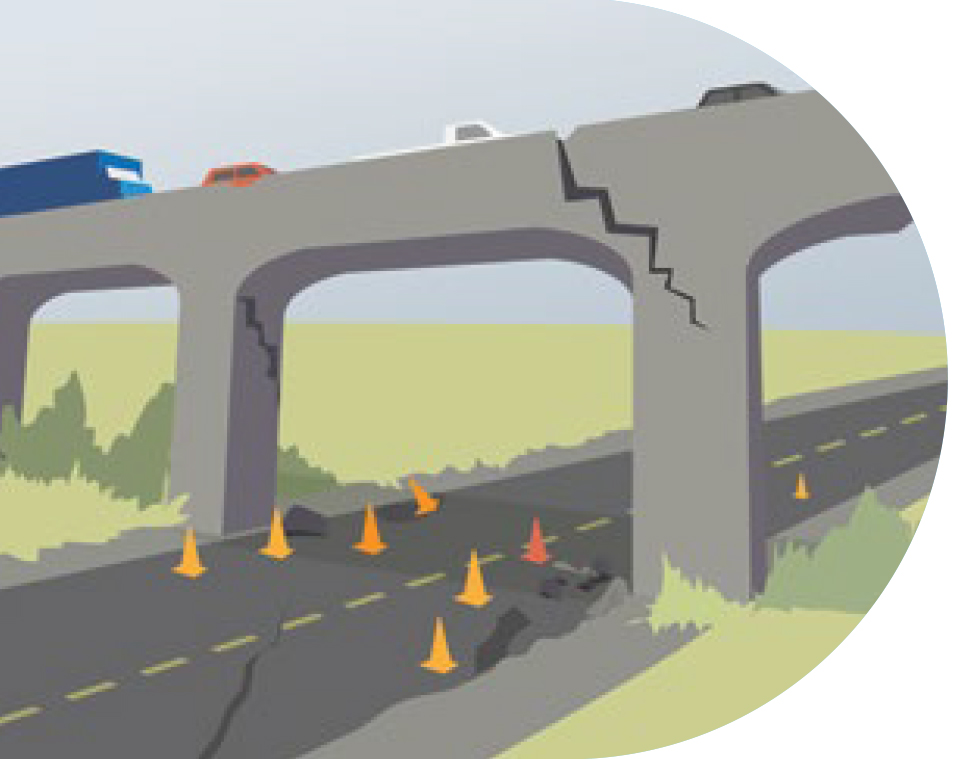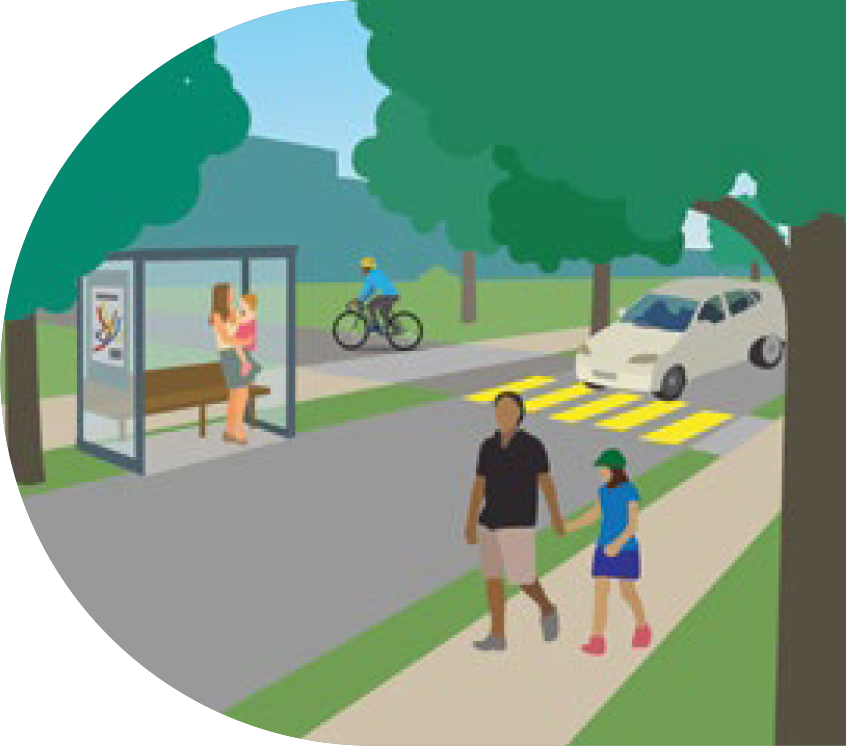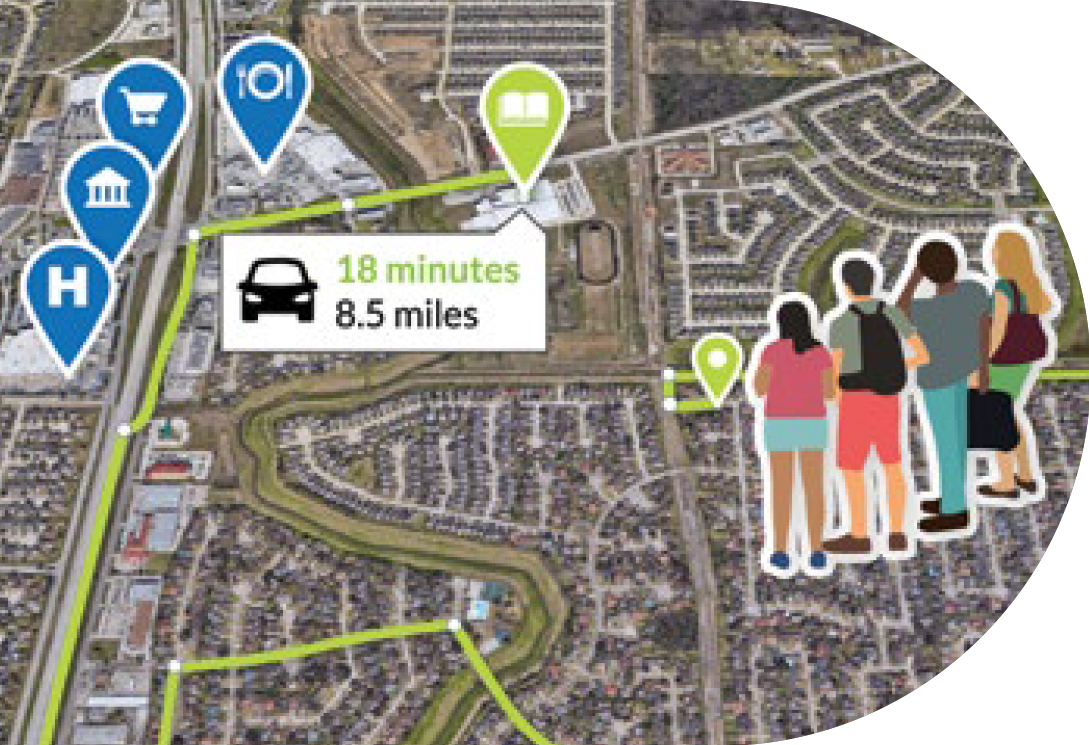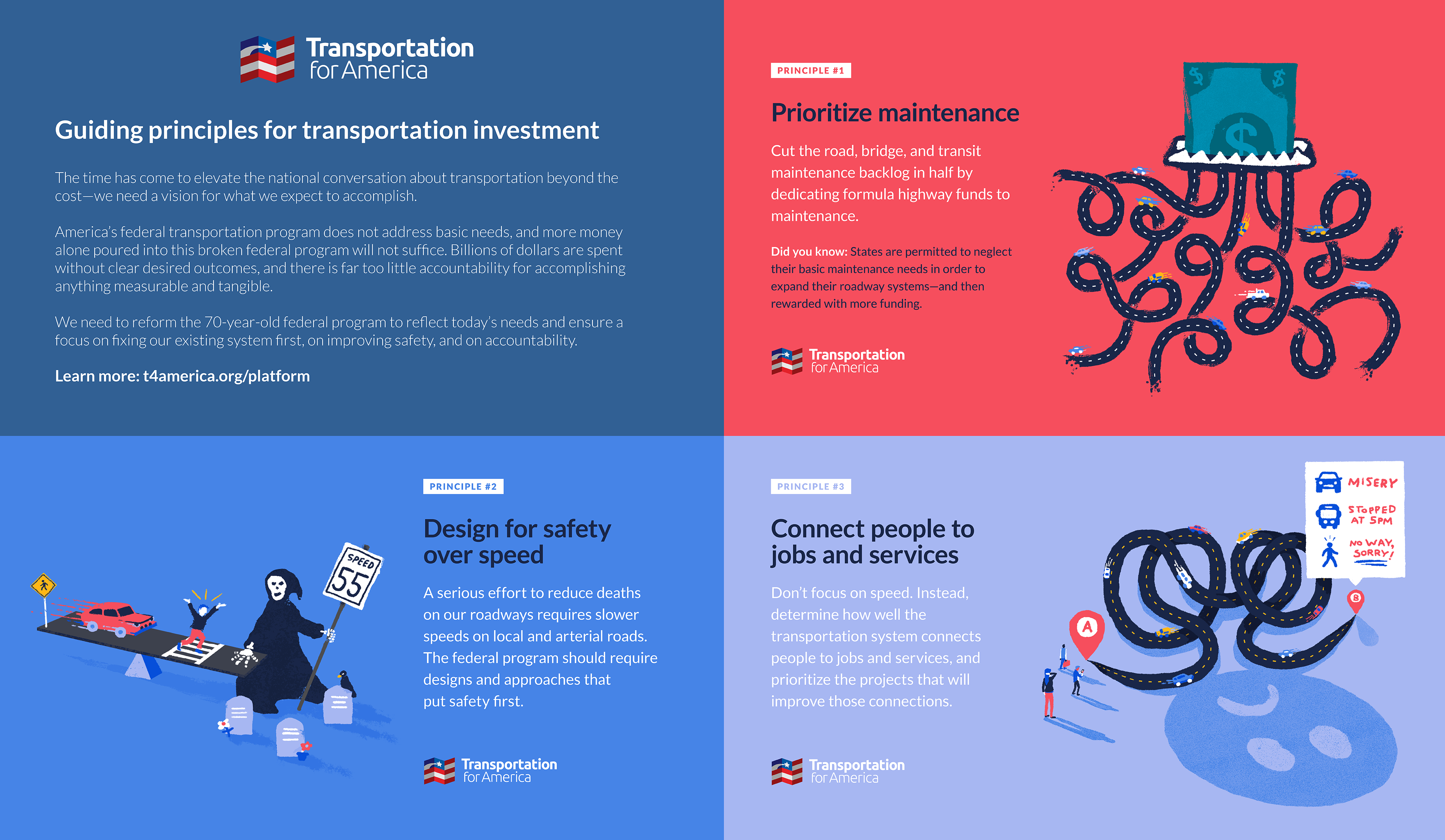Guiding principles for transportation investment
It’s past time to elevate the national conversation about infrastructure beyond just the price tag
We spend nearly $40 billion in federal tax dollars every year, which fails to bring us equivalent returns. The more we spend, the more that congestion, emissions, and pedestrian fatalities seem to rise.
We spend billions while failing to address our most basic need: getting people where they need to go safely and efficiently. More money alone will not suffice without accountability for measurable or tangible accomplishments.
We need a new plan beyond “spend more money.” Whether a standalone infrastructure plan or a multi-year authorization, T4America has three simple principles for any comprehensive federal investment in transportation:
(click the image at right or here to download a sharable PDF of these principles)
Prioritize maintenance

If your house has a leaky roof, it’s only prudent to fix the roof before building a new addition. Our transportation system is no different. In transit, formula funds are focused on maintenance, perhaps overly so. Roadway funds are not focused on maintenance, and our roads are deteriorating, despite unprecedented high levels of funding, including windfall funding from the 2009 Recovery Act. States are allowed to spend more on expansion than repair—which many states do—so merely adding new funding into these existing programs will not reduce our maintenance backlog.
Cut the road, bridge, and transit maintenance backlog in half
The next authorization should cut the maintenance backlog in half by dedicating formula highway funds to maintenance. In addition, when building new road capacity, agencies should be required to create a plan for maintaining both the new road and the rest of their system. This is common sense and is already required when building new transit projects. Roads should not be treated differently. On the highway side, it will be important to organize the program to better support repair. On the transit side, the program is organized well in terms of addressing maintenance needs but needs more resources.
With this approach, the federal government can halve the current backlog in six years under current funding levels. If funding is increased, they can do more.
Design for safety over speed

Access to safe, convenient transportation is a fundamental right. Today, most Americans are denied this right because their roads—not just highways—are designed to move vehicles at the highest speeds possible, and roads are not designed for people walking, biking, or taking transit as a priority.
High speeds make sense on interstates and other highways, but fatalities occur when we design all streets for high speeds rather than to connect people and create value. Local and arterial roads must be designed to put safety first.
Save lives with slower, safer road design
A serious effort to reduce deaths on our roadways requires slower speeds on local and arterial roads. The federal program should require designs and approaches that put safety first.
Roads surrounded by development should be designed to serve those areas with speeds of 35 mph or under, as speeds under 35 mph dramatically decrease the likelihood of fatalities in a crash. Roadways through developed areas have lots of points of conflict (driveways and intersections, not to mention bicyclists and pedestrians). Protecting the safety of all people who use the street must be a priority reflected in the decisions we make about how to fund, design, operate, maintain, and measure the success of our roads.
Connect people to jobs and services

The point of transportation is to get people where they need to go. Since the dawn of the modern highway era, we have used vehicle speed as a poor proxy for access to jobs and important services like healthcare, education, public services, and grocery stores. The way we build roads and design communities to achieve high vehicle speed often requires longer trips and makes shorter walking or bicycling trips unsafe, unpleasant, or impossible.
New technologies can now help us measure success by the primary thing that matters to real people: the ease of arriving at your destination. We can hold agencies accountable to deliver these connections.
Determine how well the transportation system connects people to jobs and services, and prioritize projects that will improve those connections.
Congress should require USDOT to collect the data necessary to develop a national assessment of access to jobs and services and set national goals for improvement.
With these data, state departments of transportation and planning organizations can ensure federal investments are effectively connecting people to economic opportunity. Funding should go to projects that will improve these connections, regardless of mode. State departments of transportation (DOTs) and metropolitan planning organizations (MPOs) should be held accountable by evaluating how well their investments help connect people to destinations.
These principles and expected outcomes will help us achieve measurable, tangible, concrete outcomes from the transportation program. We’re used to not expecting measurable results from the dollars we spend. It’s time to change that.
Learn more about our detailed policies for reauthorization






